3 min read
4 Tactics for Boosting the Results of Public Health Marketing
 Steven Cortese
:
Feb 27, 2023 2:26:00 PM
Steven Cortese
:
Feb 27, 2023 2:26:00 PM
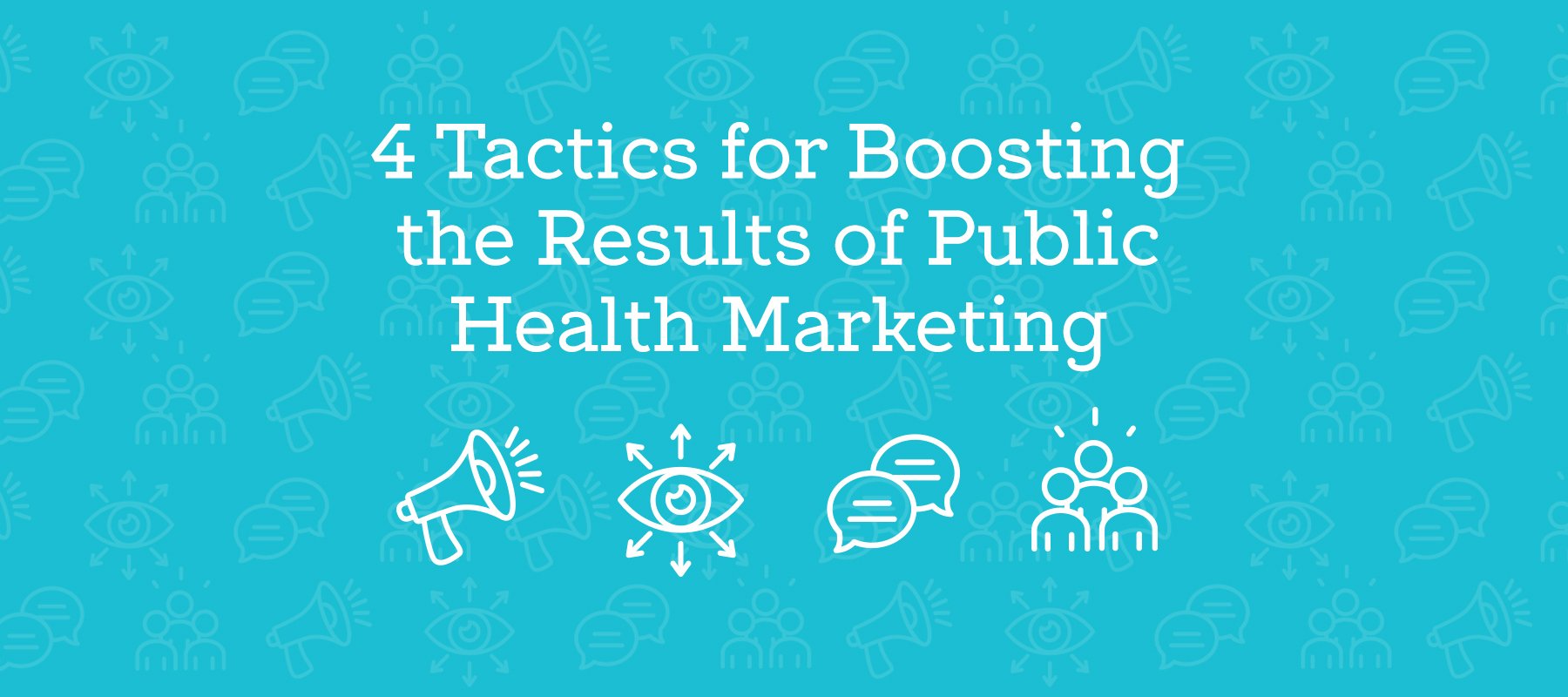
Public health and marketing are two fields that have always gone hand in hand in the United States. In fact, in 2021, pharmaceutical companies spent a whopping 6.8 billion in B2C advertising, but ever since the COVID-19 pandemic, this relationship seems even more intertwined than before. Our government is also funding public health messaging with quite significant monetary resources, but often, it can be hard to know how to spend grant money effectively, especially when it comes to communicating with hard-to-reach populations.
We work a lot with state and local public health agencies, universities, and pharmaceutical companies on doing just that. Here are 4 strategies we have successfully used to help health care organizations reach their target audiences.
1. Steer away from clinical language, visuals, and web designs.
Healthcare websites and ads can sometimes get bogged down with medical jargon. However, some audiences don’t respond well to overly technical language, either because they don’t understand the terms being used or they have lingering mistrust of the healthcare system. Taking time to research your demographic’s familiarity and engagement with your topic can help you to determine what kind of language to use (and how much jargon you can get away with). Another tactic for overcoming negative preconceptions is to present your messages alongside appealing and vibrant imagery. Your website shouldn’t look like a digital version of a hospital brochure: it should be designed with the user experience in mind. Here is an example of a landing page that we optimized by transforming a white-space dominated design into something much more youthful and fun to reach our target audience of 18–25-year-olds. We saw 2+ times more engagement with this change.
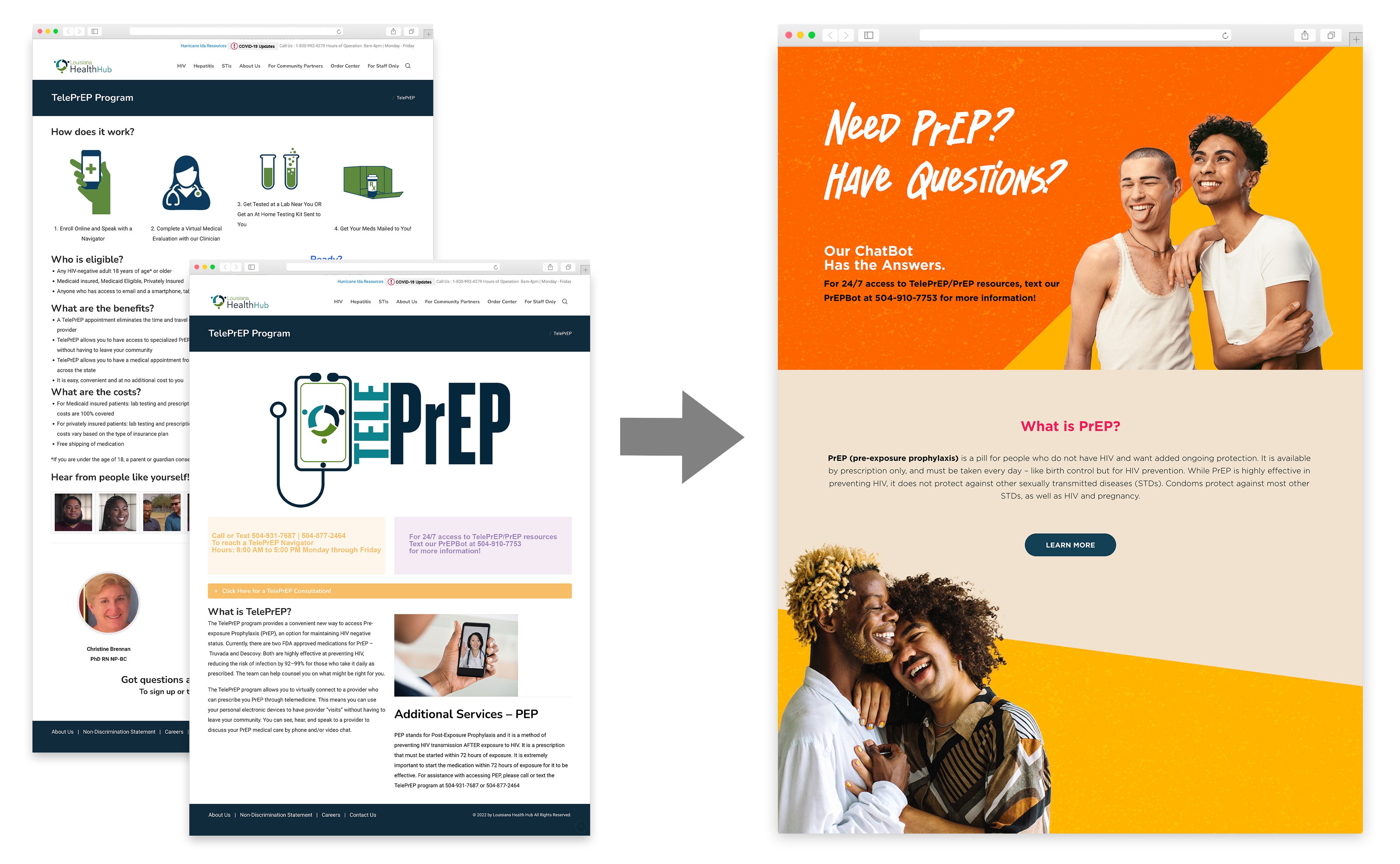 We converted a clinical looking landing page with lots of information into a simpler, more engaging design to get users to take our intended actions
We converted a clinical looking landing page with lots of information into a simpler, more engaging design to get users to take our intended actions
2. Represent your target audience in your imagery, photography, and copy.
This one seems simple, but it’s often overlooked despite being critical to the success of a campaign. Everyone wants to see themselves reflected in advertising and media—especially advertising and media directed at them. If you know you need to reach a certain demographic, make sure your photography reflects those people’s expressions and experiences. If your goal is to reach diverse audiences, pay special attention to attributes like race, ethnicity, religion, and sexual orientation when selecting models or stock photos. On the other hand, if you are trying to reach anyone and everyone, incorporate a wide range of identities in your visuals.
Here is an example of optimizing copy for a target audience of young folks
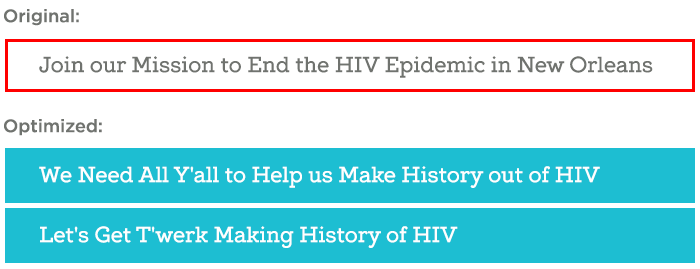
3. Test your messages!
Here are two key strategies I recommend for testing marketing messages.
- The first is organizing a focus group. This allows you to connect with and understand people in your target audience, ask them questions, and show them your messages and visuals in exchange for honest feedback. From there, you can refine your messages based on the responses of your focus group.
- The second strategy for refining a message is A/B testing. Running two (or more) versions of creative to the same audience in equal rotation will allow you to see which version drives higher engagement. When A/B testing, make sure you are only changing one variable per creative version so you’ll be certain what factor is causing the preferred outcome. Want even more data?
Helpful hint: Use both focus groups and A/B testing as part of a larger strategy to understand what appeals to your audience.
4. Have a community presence through activations.
Activations are experience-based aspects of a campaign and can include in-store promotions, setting up an interactive booth or photo op at a local event, and more. These are great opportunities to introduce yourself to the community on a personal level, to teach the public about best health practices, and to inform them about beneficial treatments. You should also provide some sort of value at these events. For example, if you're trying to spread a message about STI testing among the queer community, consider setting up a free testing booth or giving away condoms at a Pride event. If your goal is to educate the Black community on unique health risks, you could hand out branded educational material at Essence Fest. Activations can be even more successful if you engage brand ambassadors who represent your target audience, which allows people to more easily picture how your message fits into their lives.
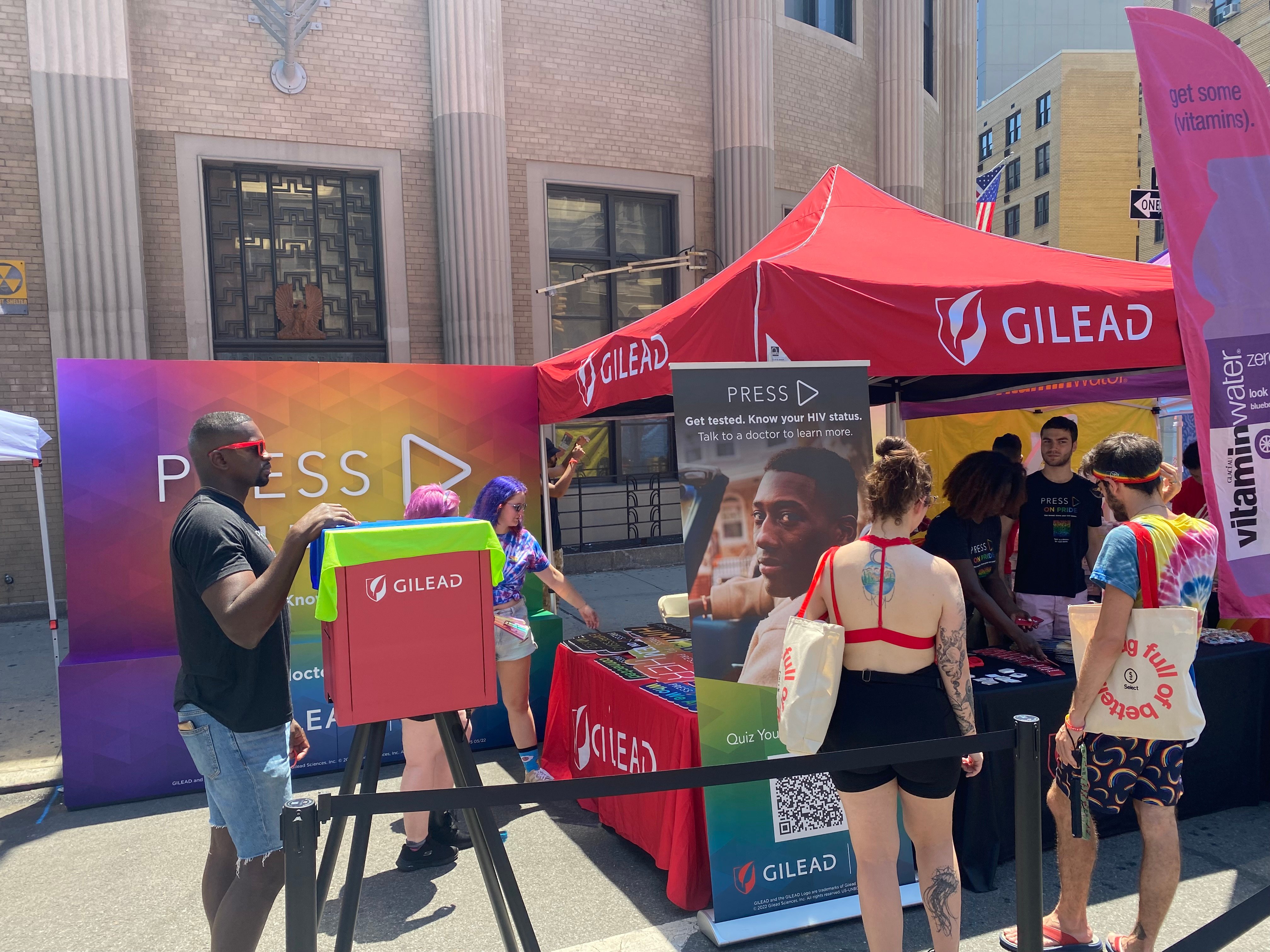 An activation we did with Gilead at NYC Pride
An activation we did with Gilead at NYC Pride
These four tactics are great on their own, but even more powerful when part of a comprehensive marketing strategy. If you need help creating and executing a strategy to reach your audience, reach out, we’d love to help.
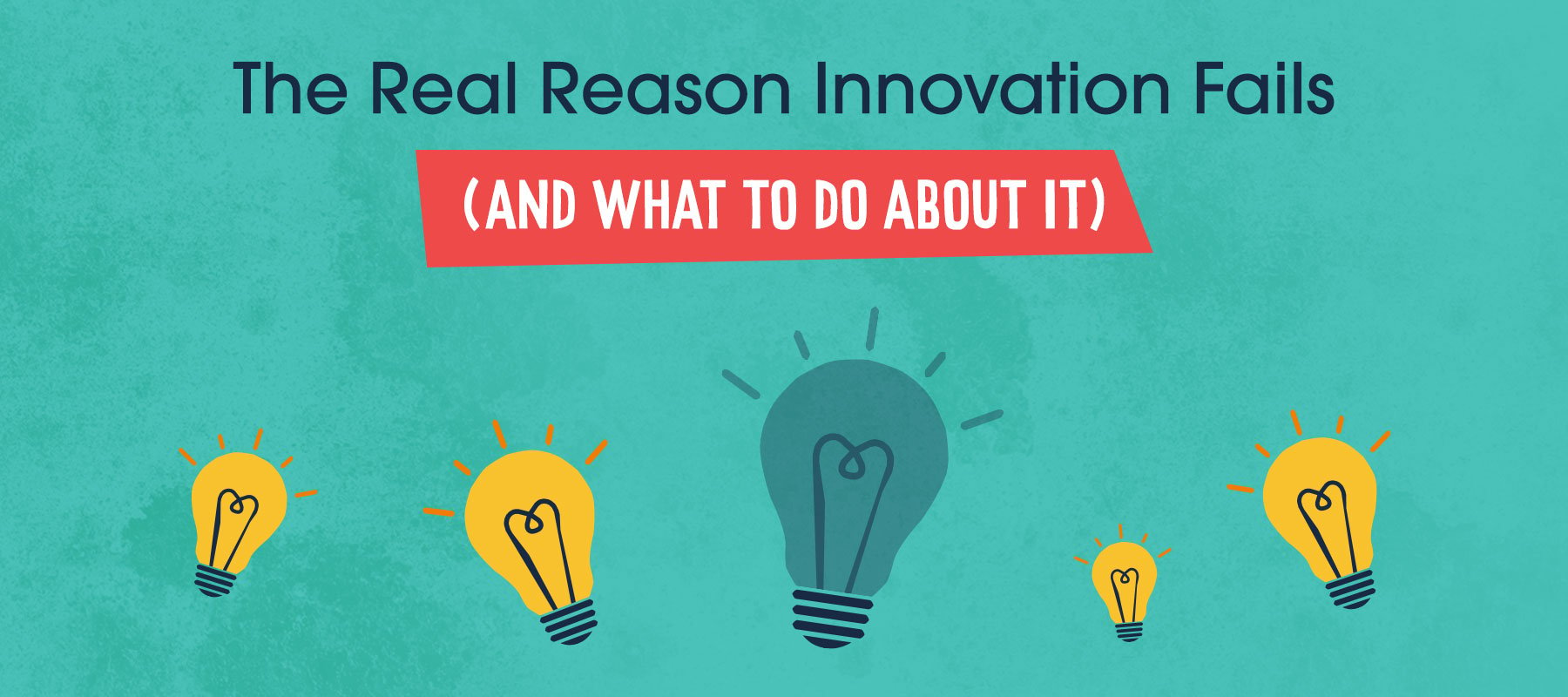
The Real Reason Innovation Fails (And What to Do About It)
Innovation is essential for long-term growth. Yet despite big investments and bold ambitions, many companies continue to fall short. Why? Because...
.jpg)
The Behavioral Science Secret to Marketing That Actually Changes Minds
More marketers today talk about behavioral science (BeSci) than ever before, but many are missing the real opportunity. Most use BeSci to improve...

